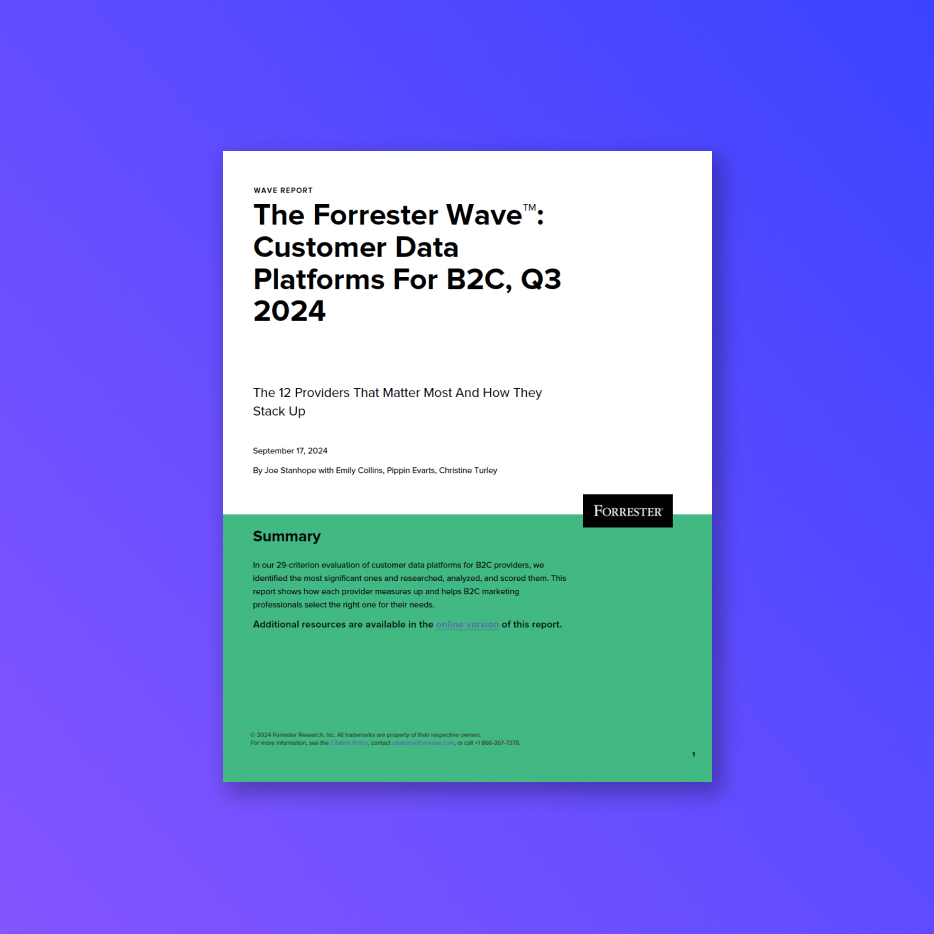Treasure Data CDP Resources

Treasure Data Named a Leader by Forrester
Get complimentary access to The Forrester Wave™: Customer Data Platforms For B2C, Q3 2024. Treasure Data was named a Leader by Forrester.
- Filter by Resource Type
- Analyst Reports
- Articles
- Blog
- Case Studies
- Cheatsheets
- Events
- Reports
- Sales Sheets
- Webinars
- Filter by Industry
- Automotive
- CPG
- Entertainment & Media
- Financial Services
- Healthcare
- Retail
- Technology
- Travel & Hospitality
- Filter by Topic
- AI & Machine Learning
- CDP
- CDP Use Cases
- Company News
- Customer Data Strategy
- Customer Service
- Data Privacy & Security
- Marketing
- Partners
- Treasure Data CDP
Mapping the Customer Journey Toward Acquisition: Improve Your Lead Generation
A CDP helps translate the customer journey into greater acquisition through dynamic personalization and consumer insights activation.
The ROI in a Customer Data Platform
Forrester Consulting calculated a 802% customer data platform ROI for companies using Treasure Data’s enterprise CDP.
Customer Data Platform vs. CRM: Which Is the Best Enterprise Solution?
Discover which provides a richer data foundation and deeper customer insights – a CDP or CRM.
Know When a CDP Upgrade Is Overdue
A CDP upgrade resolves long-standing legacy system pitfalls like limited functionality and weak competitive advantage.
Data Security and Privacy: A Complete Guide
Treasure Data helps businesses take control of their data security and privacy to maintain compliance with increasingly complex regulations.
Best Examples for Marketing Optimization You Will Actually Use
CDP marketing optimization examples include lead nurturing, audience segmentation, omnichannel messaging, and journey personalization, among others.
How To Leverage Customer Experience Insights for More Integrated Marketing
Customer journeys take place in a digital landscape dotted with hundreds of touchpoints. Use CX insights to craft relevant journeys.
CDP vs. DMP: What’s the difference?
Discover whether a CDP or DMP provides a superior customer data foundation that enhances all marketing aspects.
Your Customer Data Platform Vendor Comparison Guide
Discover the top 10 features that should be on your CDP vendor comparison checklist.
